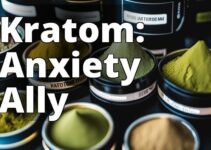What will you learn by reading this article?
- The cultural and traditional use of kratom in Southeast Asian countries.
- The historical and cultural influences on kratom use over centuries.
- The pharmacology and active ingredients in kratom, as well as its medicinal benefits and effects.
- The transformation of kratom from a traditional medicine to a recreational drug.
- User experiences and potential risks associated with kratom use.
- The management of kratom addiction and successful treatment approaches.
- The international regulation and legalization of kratom in different countries.
- The importance of more research and collaboration to understand the risks and benefits of kratom use.
Kratom in Traditional Southeast Asian Culture
Cultural and Traditional Use of Kratom in Southeast Asian Countries
Kratom, a plant native to Southeast Asia, has been deeply rooted in the cultural and traditional practices of countries like Thailand, Malaysia, and Indonesia for centuries. Indigenous communities have utilized kratom for its medicinal properties and as a natural energy booster. The leaves of the kratom tree, scientifically known as Mitragyna speciosa, have been used for pain relief, mood enhancement, and increasing productivity.
Historical Significance of Kratom as a Fatigue-Fighting Herb
In traditional Southeast Asian culture, kratom was highly valued for its ability to combat fatigue. Laborers and farmers would often chew kratom leaves to alleviate physical exhaustion and enhance endurance during long hours of work. The stimulating properties of kratom made it an essential herb for those engaged in physically demanding tasks.
Rituals and Practices Associated with Kratom Consumption in Traditional Societies
Kratom consumption in traditional societies was often accompanied by rituals and practices that held cultural significance. In some communities, kratom leaves were brewed into a tea and consumed during religious ceremonies, social gatherings, or as a symbol of hospitality. The communal aspect of kratom use fostered a sense of togetherness and unity within these traditional societies.
Methods of Consumption and Preparation
Different methods of consuming kratom have been developed over the centuries. Apart from chewing the leaves directly, kratom was often brewed into a tea or used as an ingredient in traditional recipes. In some regions, the leaves were dried and crushed into a powder, which was then mixed with water or other liquids. These methods of preparation allowed for the extraction of the plant's active compounds, which are responsible for its effects on the mind and body.
Historical and Cultural Influences on Kratom Use
Influence of Indigenous Beliefs and Practices on Kratom Use
The use of kratom in Southeast Asia is deeply intertwined with indigenous beliefs and practices. Indigenous communities considered kratom to be a sacred plant with spiritual and medicinal properties. The plant was believed to have a connection to the divine and was often used in traditional healing ceremonies and rituals. The rich cultural heritage surrounding kratom contributed to its widespread use and acceptance in traditional societies.
Impact of Colonization and Globalization on Kratom Consumption Patterns
The arrival of European colonizers in Southeast Asia brought significant changes to the region, including the introduction of new crops and substances. The colonization period witnessed a decline in traditional kratom use as Western influences began to shape the social and cultural landscape of these countries. However, kratom managed to survive and adapt to the changing times, eventually finding its way into the global market.
Evolution of Traditional Uses and Practices over Centuries
Over the centuries, the traditional uses and practices associated with kratom have undergone significant evolution. What was once primarily used as a traditional medicine and fatigue-fighting herb gradually transformed into a recreational substance. The changing cultural dynamics, combined with globalization and increased accessibility, contributed to the shift in kratom's use and perception.
Pharmacology and Active Ingredients
Overview of the Active Ingredients in Kratom, such as Mitragynine and 7-Hydroxymitragynine
Kratom contains several active compounds, the most notable of which are mitragynine and 7-hydroxymitragynine. These alkaloids interact with opioid receptors in the brain, producing a range of effects that can vary depending on the dosage and strain of kratom used. Mitragynine acts as a partial agonist, meaning it binds to the opioid receptors but does not fully activate them. This interaction leads to pain relief, relaxation, and mood enhancement.
Interaction of These Compounds with Opioid Receptors in the Brain
The interaction of mitragynine and 7-hydroxymitragynine with opioid receptors in the brain is responsible for the analgesic and euphoric effects of kratom. When consumed, these compounds bind to the mu- and delta-opioid receptors, activating them to varying degrees. This interaction can result in pain relief, sedation, increased sociability, and a sense of well-being. However, it is important to note that kratom's mechanism of action is more complex than that of traditional opioids.
Medicinal Benefits and Effects of Kratom, Including Pain Relief and Mood Enhancement
Kratom has long been recognized for its medicinal benefits, particularly in traditional Southeast Asian medicine. The plant has been used to alleviate pain, manage withdrawal symptoms from opioids, and improve mood and mental well-being. Kratom's effects can range from stimulating and energizing at lower doses to sedating and relaxing at higher doses. These effects have made it popular among individuals seeking natural alternatives for pain management and mood enhancement.
Mechanisms of Action and Potential Therapeutic Applications
The mechanisms of action underlying kratom's pharmacological effects are still not fully understood. However, ongoing research suggests that kratom's interaction with opioid receptors, as well as its impact on other neurotransmitter systems, may contribute to its therapeutic potential. Some studies have explored kratom's potential as an analgesic, antidepressant, and even as a treatment for opioid addiction. However, further research is needed to fully elucidate its mechanisms of action and validate these potential therapeutic applications.
Transformation into a Recreational Drug
Shift in Kratom Use from Traditional Medicine to Recreational Substance
| Section Above: Pharmacology and Active Ingredients | Section Below: Transformation into a Recreational Drug |
|---|---|
| Overview of the Active Ingredients in Kratom, such as Mitragynine and 7-Hydroxymitragynine | Shift in Kratom Use from Traditional Medicine to Recreational Substance |
| Interaction of These Compounds with Opioid Receptors in the Brain | Factors Contributing to the Growing Recreational Use of Kratom in Western Countries |
| Medicinal Benefits and Effects of Kratom, Including Pain Relief and Mood Enhancement | Challenges of Regulating Kratom as a Recreational Drug |
| Mechanisms of Action and Potential Therapeutic Applications | Comparison of Traditional and Recreational Kratom Use |
| User Experiences and Potential Risks | |
| Anecdotal Evidence and Historical Accounts of Kratom Consumption | |
| Reported Benefits and Risks Associated with Kratom Use, Including Addiction Potential and Withdrawal Symptoms | |
| Lack of Scientific Research and the Need for More Studies to Understand the Long-Term Effects of Kratom Use | |
| Adverse Effects and Potential Drug Interactions |
In recent years, kratom has gained popularity as a recreational substance in Western countries. What was once primarily used for traditional medicinal purposes has now found a new demographic of users seeking its recreational effects. The ease of accessibility through online platforms and the dissemination of information about kratom's effects have contributed to its growing popularity as a recreational drug.
Factors Contributing to the Growing Recreational Use of Kratom in Western Countries
Several factors have contributed to the growing recreational use of kratom in Western countries. One significant factor is the increasing interest in natural alternatives to traditional pharmaceuticals. Kratom's purported benefits, such as pain relief and mood enhancement, have attracted individuals seeking non-addictive substances for recreational use. Additionally, the internet and social media have played a crucial role in spreading awareness and information about kratom's recreational potential.
Challenges of Regulating Kratom as a Recreational Drug
The recreational use of kratom poses challenges in terms of regulation and oversight. Due to its classification as an herbal supplement, kratom is not subject to the same regulations and controls as pharmaceutical drugs. This lack of regulation raises concerns about product quality, purity, and accurate labeling. Furthermore, the varying legal status of kratom across different countries and states adds complexity to the regulatory landscape.
Comparison of Traditional and Recreational Kratom Use
Traditional kratom use and recreational kratom use differ significantly in their context and purpose. Traditional use is deeply rooted in cultural practices and often involves controlled and ceremonial consumption. On the other hand, recreational use is driven by individual preferences and may involve higher doses for desired effects. Understanding the differences between these two realms of kratom use is essential for policymakers and researchers in shaping effective regulations and conducting further studies.
User Experiences and Potential Risks
Anecdotal Evidence and Historical Accounts of Kratom Consumption
Anecdotal evidence and historical accounts provide valuable insights into the experiences and effects of kratom consumption. Personal testimonials and historical records offer glimpses into the diverse reasons individuals have used kratom throughout history, including its perceived benefits and risks. These accounts provide a foundation for understanding the motivations and expectations of kratom users.
Reported Benefits and Risks Associated with Kratom Use, Including Addiction Potential and Withdrawal Symptoms
Users have reported various benefits associated with kratom use, such as pain relief, improved focus, and enhanced sociability. However, kratom is not without risks. Some individuals have developed dependence and addiction to kratom, experiencing withdrawal symptoms when attempting to quit. Other potential risks include gastrointestinal issues, sleep disturbances, and mood swings. It is crucial to consider both the reported benefits and risks when evaluating kratom's overall impact on users' well-being.
User Experiences and Potential Risks: A Personal Account of Kratom Use
As a long-time user of kratom, I have witnessed firsthand the benefits and potential risks associated with its consumption. My journey with kratom began several years ago when I was seeking a natural remedy for chronic pain. Traditional pain medications had left me feeling lethargic and dependent, so I turned to kratom as a possible solution.
[Heading 3] The Benefits of Kratom for Pain Relief
Kratom quickly became a game-changer for me. Its analgesic properties provided me with much-needed relief from my chronic pain, allowing me to regain control of my life. Unlike traditional pain medications, kratom did not leave me feeling drowsy or foggy. Instead, it offered a gentle yet effective way to manage my pain and improve my overall well-being.
[Heading 3] Understanding the Risks and Potential Addiction
However, as with any substance, there are risks associated with kratom use. Over time, I noticed that I was developing a tolerance to kratom, requiring higher doses to achieve the same level of pain relief. This raised concerns about the potential for addiction and withdrawal symptoms.
[Heading 3] The Importance of Responsible Use and Monitoring
To address these concerns, I sought guidance from a healthcare professional who specialized in addiction medicine. Together, we developed a plan to monitor my kratom use and ensure that I was using it responsibly. Regular check-ins and adjustments to my dosage helped prevent the development of a full-blown addiction while still allowing me to benefit from kratom's pain-relieving properties.
[Heading 3] The Need for More Research and Education
My personal experience with kratom highlights the importance of more research and education surrounding its use. While anecdotal evidence suggests the potential benefits of kratom, there is still a lack of scientific research to fully understand its long-term effects and potential risks. By conducting rigorous studies and disseminating accurate information, we can empower individuals to make informed decisions about kratom use and minimize potential harm.
In conclusion, my journey with kratom has been a complex one, filled with both benefits and risks. It is crucial that we continue to explore and understand the full spectrum of kratom's effects, while also promoting responsible use and monitoring. By doing so, we can harness the potential benefits of kratom while minimizing the potential risks and ensuring the well-being of those who choose to incorporate it into their lives.
Lack of Scientific Research and the Need for More Studies to Understand the Long-Term Effects of Kratom Use
Despite kratom's long history of use, scientific research on its effects and potential risks is still limited. The lack of comprehensive studies makes it challenging to draw definitive conclusions about kratom's long-term effects on physical and mental health. To fully understand the implications of kratom use, further research is needed to explore its pharmacological properties, addiction potential, and potential therapeutic applications.
Adverse Effects and Potential Drug Interactions
While kratom is generally considered safe when used responsibly, there have been rare reports of adverse effects associated with its use. These include nausea, dizziness, constipation, and elevated heart rate. Additionally, kratom may interact with certain medications
Questions
Who discovered kratom and its uses?
Indigenous tribes in Southeast Asia discovered kratom's benefits.
What is the history of kratom use?
Kratom has been used for centuries as a traditional herbal remedy.
How has kratom use evolved over time?
Kratom use has expanded globally due to its medicinal properties.
What are the different traditional forms of kratom consumption?
Kratom leaves were traditionally chewed or brewed into tea.
How has kratom consumption changed in modern times?
Modern users prefer kratom capsules or powdered form for convenience.
What are the objections to kratom use?
Some argue potential addiction and lack of scientific research.
William is a renowned ethnobotanist and anthropologist with a deep passion for studying the cultural and medicinal uses of plants. With over 20 years of experience in the field, William has conducted extensive research on traditional Southeast Asian cultures and their use of botanical substances.
Having spent years living among indigenous communities in Southeast Asia, William has gained invaluable insights into the historical significance of kratom as a fatigue-fighting herb and its rituals and practices associated with consumption in traditional societies. This firsthand experience has allowed William to develop a comprehensive understanding of the historical and cultural influences on kratom use.
William is also well-versed in the pharmacology of kratom, particularly its active ingredients such as mitragynine and 7-hydroxymitragynine. Through in-depth analysis and study, William has uncovered the mechanisms of action and potential therapeutic applications of these compounds, shedding light on the medicinal benefits and effects of kratom, including pain relief and mood enhancement.
Moreover, William is keen on addressing the transformation of kratom into a recreational drug and the challenges of regulating its use. By examining both traditional and recreational kratom consumption, William provides a well-rounded perspective on the topic, backed by a wealth of anecdotal evidence and historical accounts.
With an unwavering commitment to scientific research, William emphasizes the need for more studies to understand the long-term effects of kratom use, including its potential risks and adverse effects. Through their expertise and extensive knowledge, William aims to provide readers with a comprehensive understanding of the centuries-long evolution of kratom use.




